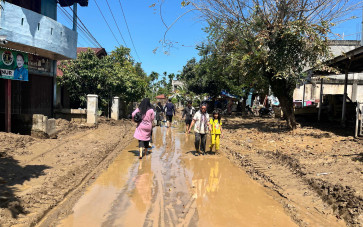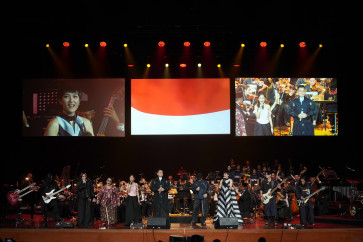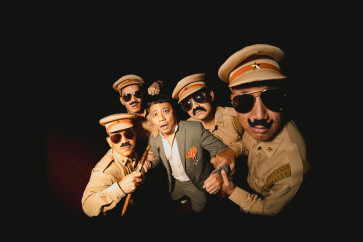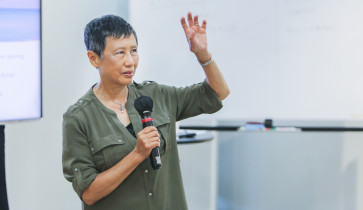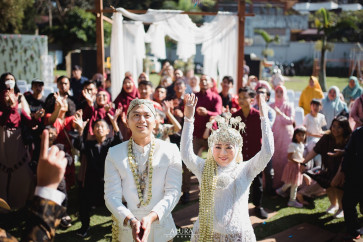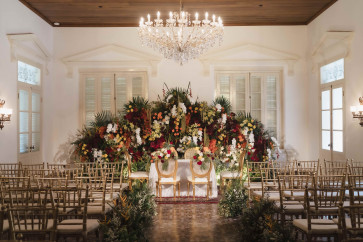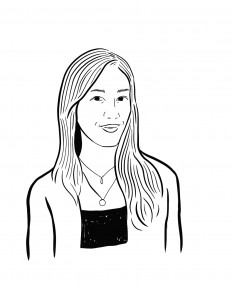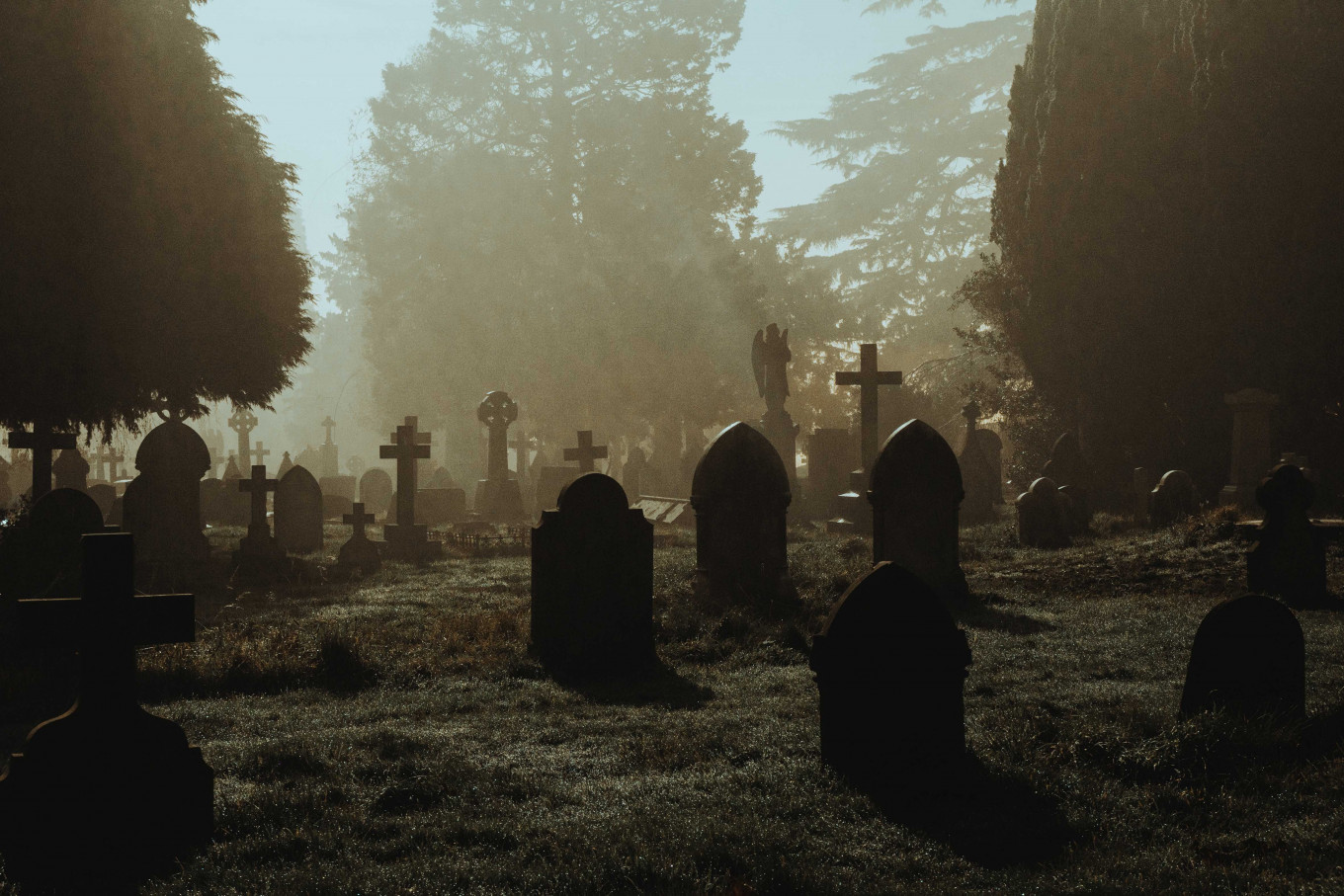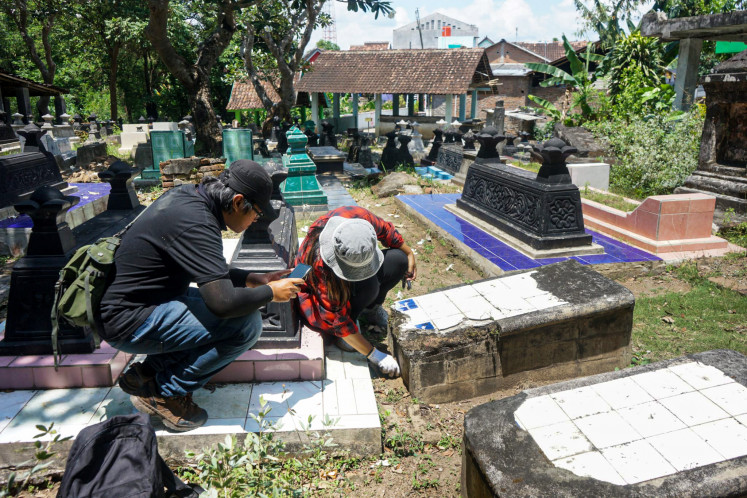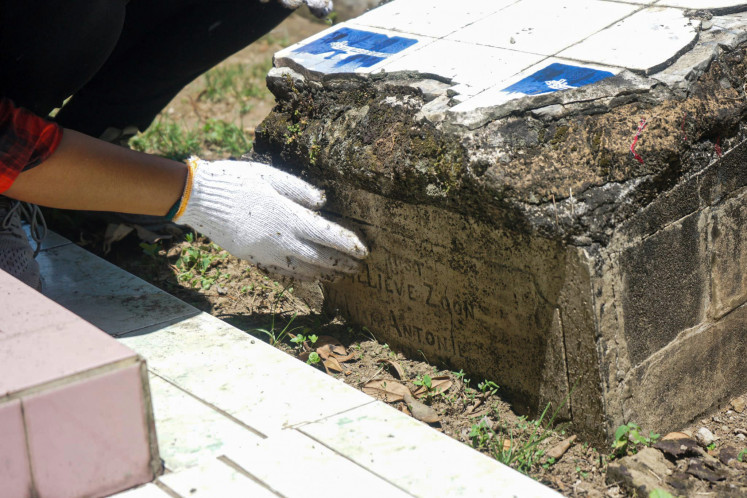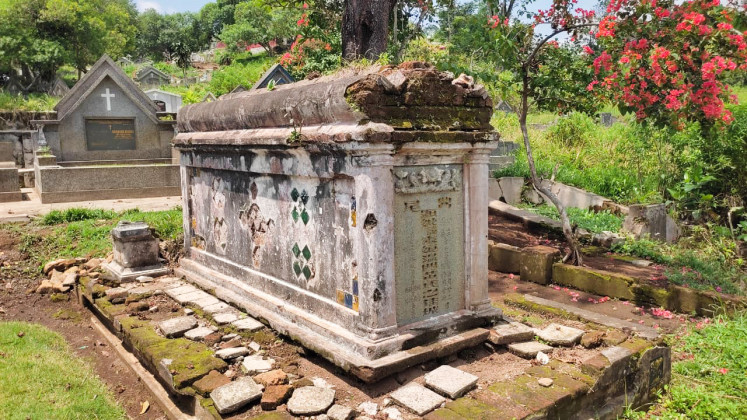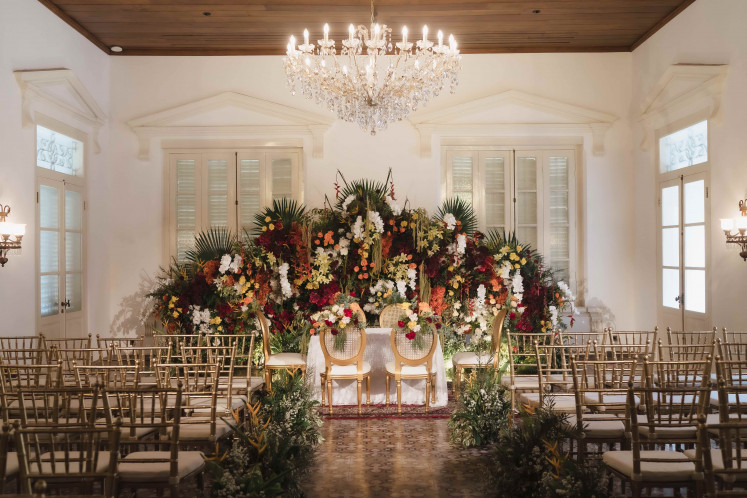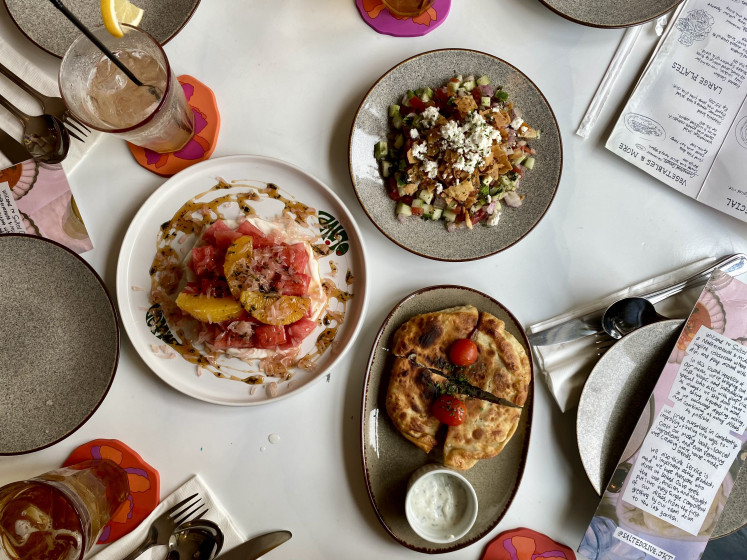I’ve always been fascinated by the idea of knowing where I come from, not just through the geographical traces in my genes decoded by a US$100 DNA test, but by tracing the human stories behind the science.
Digging through names, photos and oral fragments of memory, I wasn’t just learning about the past; I wanted to keep it alive. Saying my ancestors’ names out loud felt like an act of remembrance, as if I could keep them from dying a second time by repeating their names.
There was just one problem: There’s a missing branch on my family tree. My maternal grandmother could never locate her grandparents in Manado, North Sulawesi, due to a rift that divided the family long ago.
The more I searched, the more questions I had. Could I still find them? Is anyone still visiting their graves? It was grief mixed with curiosity, and I wasn’t sure which was the stronger.
That question followed me for years, until it led me to the gates of a cemetery and into the strange, unexpected world of Indonesia’s grave finder community.
Morbid curiosity
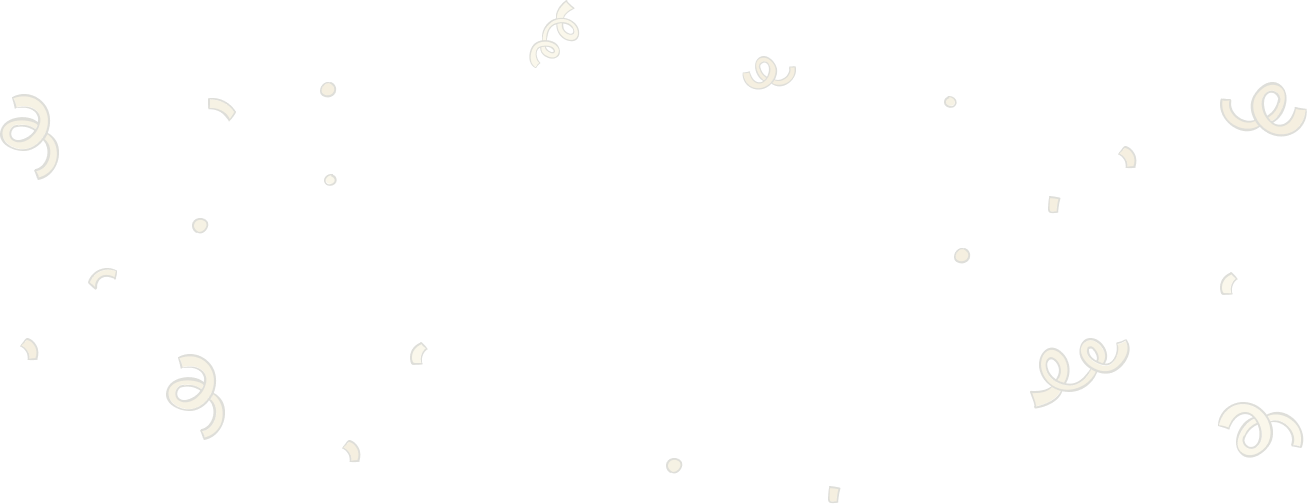
Thank you!
For signing up to our newsletter.
Please check your email for your newsletter subscription.
“By recognizing our ancestors, we are actually also recognizing ourselves with various histories,” says Asta Dewanti, a mental health practitioner and founder of mental health platform AdaDiKamu, explaining our need to find out where we came from.
“When we care for the memories and graves of our ancestors, we are actually caring for their legacy, which lives in our DNA,” she explains.
Looking back, then, might just be another way of finding where we belong. But what happens when that past is buried somewhere unknown?
Six years ago, my mom took me to a family cemetery she found in Semarang, Central Java, as a “welcome home” gift of sorts. It was the final resting place of her great-great-grandparents on her father’s side. She was proud, yet also restless.
She then told me that her maternal great-grandfather had left behind another family in North Sulawesi. All we had were their names, and no way to find them.
That was when I stumbled across Indonesia Graveyard on Instagram, a community that sounded both eerie and comforting. Founded in 2016 by Hanonsari “Ruri” Paramita and Deni Priya Prasetia, it is a nationwide group of cemetery enthusiasts who visit and document graves every two weeks.
“My father passed away when I was 13. I visited his grave a lot, to study and so on. That's why I find the atmosphere in graveyards really comfortable,” Ruri says.
“When I lived in Jakarta, the city was so crowded, so I went to his grave” as a sort of escape, she recalls.
Ruri was drawn to the quiet and calm, but also to the “cool, vintage and classic” tombstones. She and Deni started taking and posting photos of the monuments, wanting to document old and abandoned graves before time erased them. Over the years, their online gallery became a living archive of beauty, history and forgotten lives, and gained over 13,000 followers.
Asta, on the other hand, says she joined the community simply because she is interested in the history of Indonesian tombs.
“It actually aligns with my studies in the psychology of death at the Faculty of Psychology at Airlangga University,” she adds.
What began as a hobby has now evolved into a cultural restoration activity.
Serendipitous moments
Though the mission of Indonesia Graveyard isn’t to reunite families, fate sometimes intervenes.
“We love to go to old graveyards and while we are doing that, if someone asks us to help find their ancestors, then why not?” Ruri says. “It feels really good after helping someone find their ancestors.”
Ruri recalls her first request, which came from an elderly Australian man looking for his uncle’s grave in Jakarta.
“It took three years for me to find that. I didn't mean to come across it; it was like the universe worked together to find it,” Ruri says.
They found the grave at Petamburan Public Cemetery. The story carried a quiet grace, but it was bittersweet. Deni, her cofounder, passed away in 2019. Still, Ruri continued the work they started.
(Hanonsari Paramita)
Other searches happen faster. One recent request came from a family in the United States, trying to locate a Christian relative buried in the small West Java city of Cianjur.
“The information is very detailed,” Ruri says.
“It's easier to find because from the address of the house, there was a Christian graveyard not far from there. I got it right away.”
Many public cemeteries (TPU) have designated blocks or areas for certain religions to ensure that burials comply with their respective traditions, according to the regulation database of the Supreme Audit Agency (BPK). As such, graveyards are like structured mysteries, waiting to be solved.
The requests Ruri takes on can vary in span, with one taking years while another just minutes, but all remind her of how unpredictable life can be. Some people wait a lifetime to find answers; others stumble upon them by chance.
And sometimes, they find you.
Asta once visited the tomb of Ratu Malang, a 17th-century Javanese queen of the Mataram sultanate, she had read about only recently.
(Hanonsari Paramita)
“It felt like fate. Not far from her tomb was the tomb of Ki Dalang Panjang Mas, her first husband. Guided by the caretaker, I prayed at Ki Dalang's grave,” she recounts.
“I felt incredibly moved and I thought of my late father-in-law, Rahayu Supanggah, who happened to be a traditional musician and the son of a puppeteer couple. When I returned to Solo [Surakarta, Central Java] and told my family about this, I was shocked to learn that Ki Dalang shared the same lineage as my husband.”
Stories like these blur the line between coincidence and ancestral connection. Sometimes remembrance, like inheritance, finds its way home.
My search continues
When I reached out to Ruri, I hoped she could help me, too.
I told her about the names that had haunted our family records for decades: Jan Sigar and Adonia Lumentah, my great-great-grandparents.
My great-grandfather never spoke of them except before he died, when he told my grandmother their names, which my mother then passed down to me. That was all we had.
In return, Ruri pointed me to Genealogy Online (genealogieonline.nl), a Dutch website founded by her friend Ron van der Wal, who archives the Netherlands’ colonial records.
That tip changed everything. Among the scanned military documents available on the site, I found a file showing that my great-grandfather had been a prisoner of war. It also listed his parents’ names, Jan and Adonia: the first time I saw them in print.
It wasn’t their full story, but it was indisputable proof they were real.
Ruri wanted to help more, but her network didn’t extend to Manado. Still, she kept my request on file.
While it wasn’t the resolution I wanted, perhaps the search itself was the point.
Remembering the living
Ruri often says her work is less about death and more about life.
“Usually, I will make an announcement on Instagram Story, like, ‘I will be in Surabaya on this date. Please meet me at Makam Peneleh in Surabaya.’ At first, only three people asked to join. But when I got there, there were 10,” she says.
Makam Peneleh, a Dutch-era cemetery dating back to 1847 in the East Java capital, has become a pilgrimage site of sorts for its European-style tombs and the graves of colonial and local luminaries alike.
“The groundskeepers will definitely come along on our tour,” Ruri says.
“They are what we call ‘historical sources’. The culture and stories, especially for Islamic and Javanese tombs, were orally [kept] rather than written. The caretakers help us tell the story of each tomb.”
(Hanonsari Paramita)
Through trips like these, the Indonesia Graveyard network has quietly expanded from Yogyakarta to Surakarta to Surabaya, with social media amplifying its reach.
And maybe Ruri’s community keeps growing because deep down, we all keep searching: not for ghosts, but for grounding.
Maybe looking into our past isn’t just about seeing where we came from but where we’re going, and to remind us where we belong on that journey forward.
So this Halloween, spare a thought for those who came before you.
As Asta said: “Sometimes, the departed teach us much wisdom even after they're gone.”
Whether my own search was for curiosity or closure, I still can’t decide. But for now, I’ll keep saying their names to keep them alive.
Sheena Suparman is a writer for The Jakarta Post's Creative Desk. She is based in Jakarta but wishes she could be anywhere else. She’s usually powered by coffee, chips and cheeseburgers.




